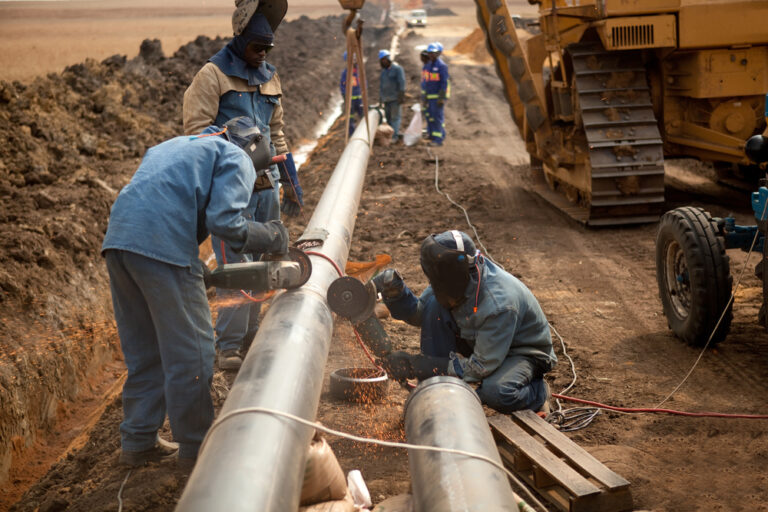On January 9, 2023, the EPA announced it entered into an agreement with TC Oil Pipeline Operations Inc., whose parent company is TC Energy, to clean up the oil discharge that occurred December 7, 2022, in Washington County, Kansas, resulting from a rupture in a section of the Keystone Pipeline.

The EPA reports an estimated 14,000 barrels (588,000 gallons) of oil leaked from the ruptured pipeline over land and into Mill Creek. The leak violated the federal Clean Water Act (CWA) and created “an imminent and substantial threat to human health and the environment.”
The Keystone Pipeline is a 2,687-mile liquid oil pipeline system between Hardisty, Alberta, Canada, and Port Arthur, Texas. The breach occurred in a section of the pipeline that stretches from Steele City, Nebraska, to Cushing, Oklahoma, and was completed in 2011.
The pipeline carries diluted bitumen, a type of heavy crude oil extracted from tar sands that is extremely sticky and has a peanut butter-like consistency that makes cleanup challenging, reports KSHB.
Crews are using temporary dams, machinery, and vacuum pumps to remove the oil from the water and excavate oil-stained earth and plant life, according to KSHB.
“A total of 414 personnel reported to the scene on Wednesday, December 14, 2022,” states an EPA Region 7 news release. “This number includes personnel from EPA, U.S. Pipeline and Hazardous Materials Safety Administration (PHMSA), state and local agencies, TC Energy, and TC Energy contractors. Response crews have recovered 233,814 gallons (5,567 barrels) of oil-water mixture from Mill Creek; 5,000 cubic yards of oil-contaminated soil; and nine cubic yards of oily solids” as of December 15, 2022.
In the cleanup order, finalized January 6, the EPA asserts that the oil impacted surface water in Mill Creek at least 3½ miles downstream and resulted in vegetation staining near the pipeline rupture, caused a visible sheen on the water, and significantly affected fish and wildlife.
The Kansas Department of Wildlife and Parks found that the leak killed 4 mammals and just over 70 fish, continues KSBH.
This “incident was the largest onshore oil spill since at least 2013, the Keystone pipeline’s third major spill in the last five years, and the largest since it began operating in 2010,” reports The Guardian. “About 22 oil spills have occurred on the Keystone pipeline in the past 12 years, with two other large incidents. TC Energy has only paid $300,000 in fines for previous spills on the Keystone pipeline, even if the spills caused more than $111m [million] in property damage.”
In 2010, a report from Plains Justice identified a pipeline construction boom between 2007 and 2009 resulting in the production and use of “substandard steel,” described as low strength, which failed under pressure, requiring the replacement of “hundreds of pipe joints.”
A manufacturer linked to the Keystone pipeline was included in the report’s list, according to The Guardian.
Additionally, “a recent US Government Accountability Office (GOA) report noted the Keystone pipeline’s safety record has been deteriorating and identified ‘construction issues’, resulting in large spills on the Keystone pipeline in 2017 and 2019.”
The EPA agreement order requires TC Oil Pipeline Operations Inc. to recover oil and oil-contaminated soil and vegetation and contain the spread of oil in Mill Creek. All work required under the order to abate the endangerment identified in the order will be completed under EPA oversight.